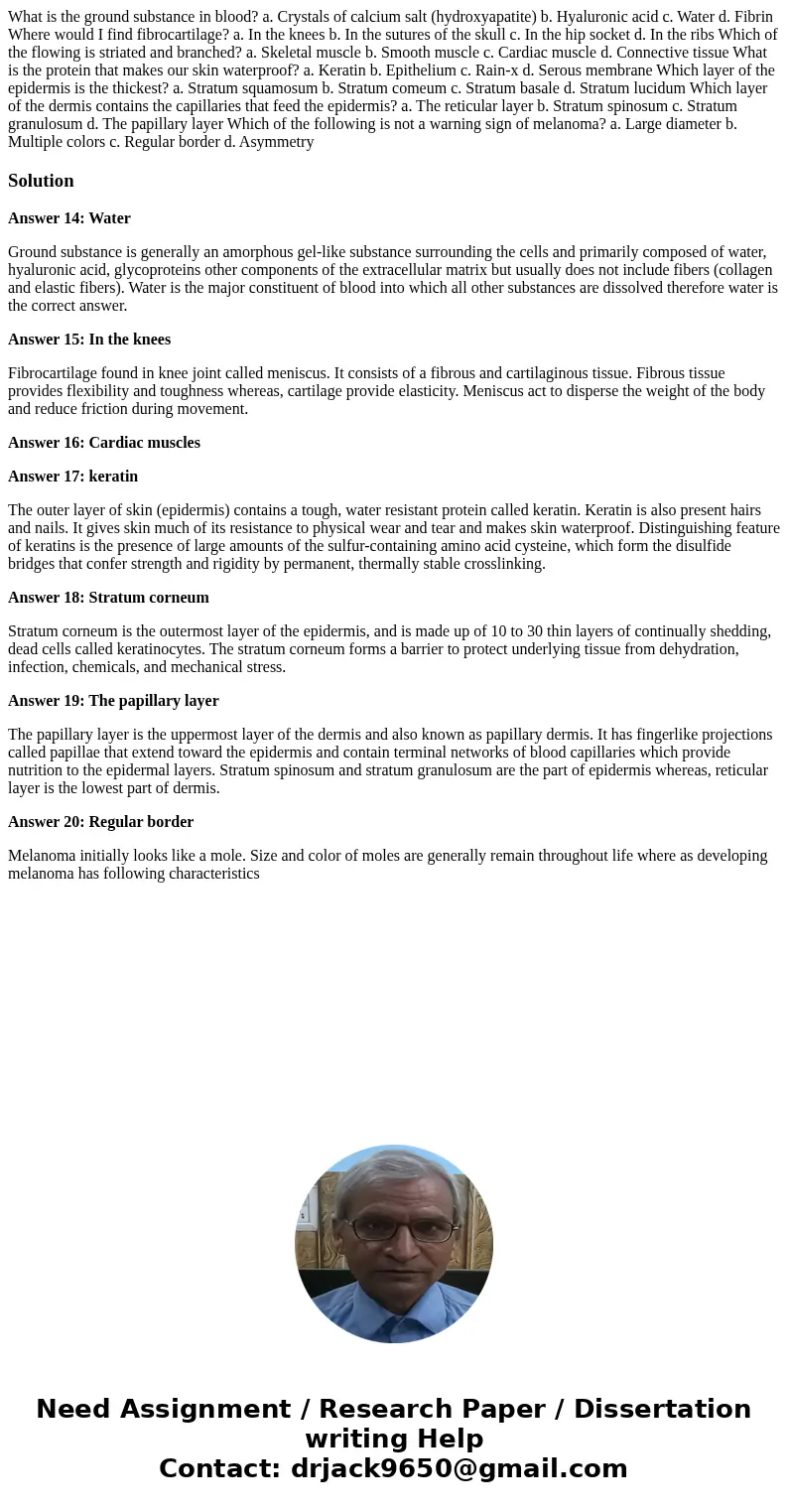What is the ground substance in blood a Crystals of calcium
Solution
Answer 14: Water
Ground substance is generally an amorphous gel-like substance surrounding the cells and primarily composed of water, hyaluronic acid, glycoproteins other components of the extracellular matrix but usually does not include fibers (collagen and elastic fibers). Water is the major constituent of blood into which all other substances are dissolved therefore water is the correct answer.
Answer 15: In the knees
Fibrocartilage found in knee joint called meniscus. It consists of a fibrous and cartilaginous tissue. Fibrous tissue provides flexibility and toughness whereas, cartilage provide elasticity. Meniscus act to disperse the weight of the body and reduce friction during movement.
Answer 16: Cardiac muscles
Answer 17: keratin
The outer layer of skin (epidermis) contains a tough, water resistant protein called keratin. Keratin is also present hairs and nails. It gives skin much of its resistance to physical wear and tear and makes skin waterproof. Distinguishing feature of keratins is the presence of large amounts of the sulfur-containing amino acid cysteine, which form the disulfide bridges that confer strength and rigidity by permanent, thermally stable crosslinking.
Answer 18: Stratum corneum
Stratum corneum is the outermost layer of the epidermis, and is made up of 10 to 30 thin layers of continually shedding, dead cells called keratinocytes. The stratum corneum forms a barrier to protect underlying tissue from dehydration, infection, chemicals, and mechanical stress.
Answer 19: The papillary layer
The papillary layer is the uppermost layer of the dermis and also known as papillary dermis. It has fingerlike projections called papillae that extend toward the epidermis and contain terminal networks of blood capillaries which provide nutrition to the epidermal layers. Stratum spinosum and stratum granulosum are the part of epidermis whereas, reticular layer is the lowest part of dermis.
Answer 20: Regular border
Melanoma initially looks like a mole. Size and color of moles are generally remain throughout life where as developing melanoma has following characteristics

 Homework Sourse
Homework Sourse